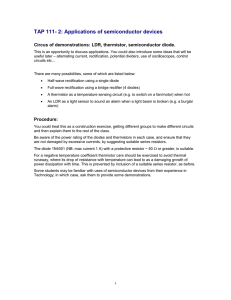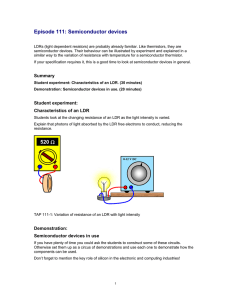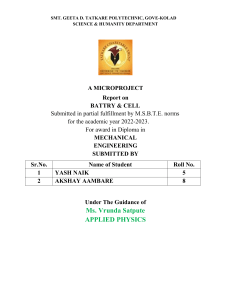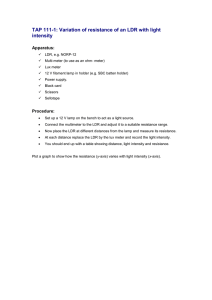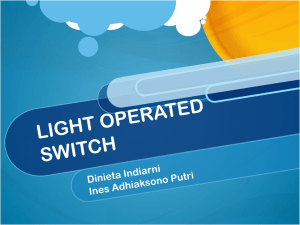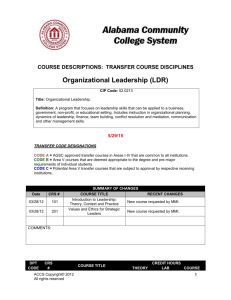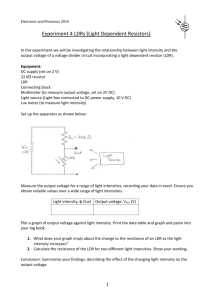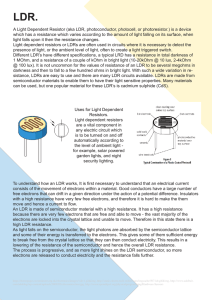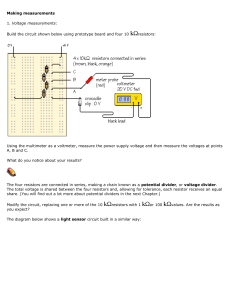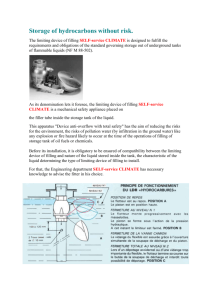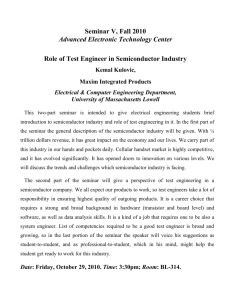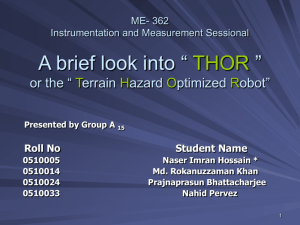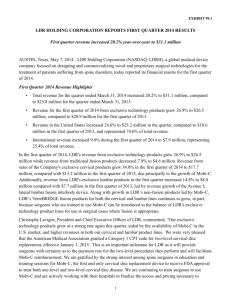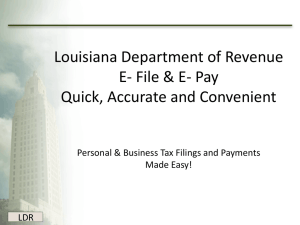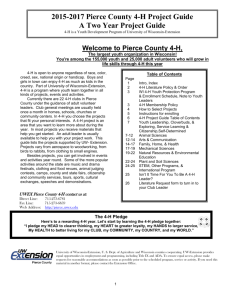Episode 111: Semiconductor devices
advertisement
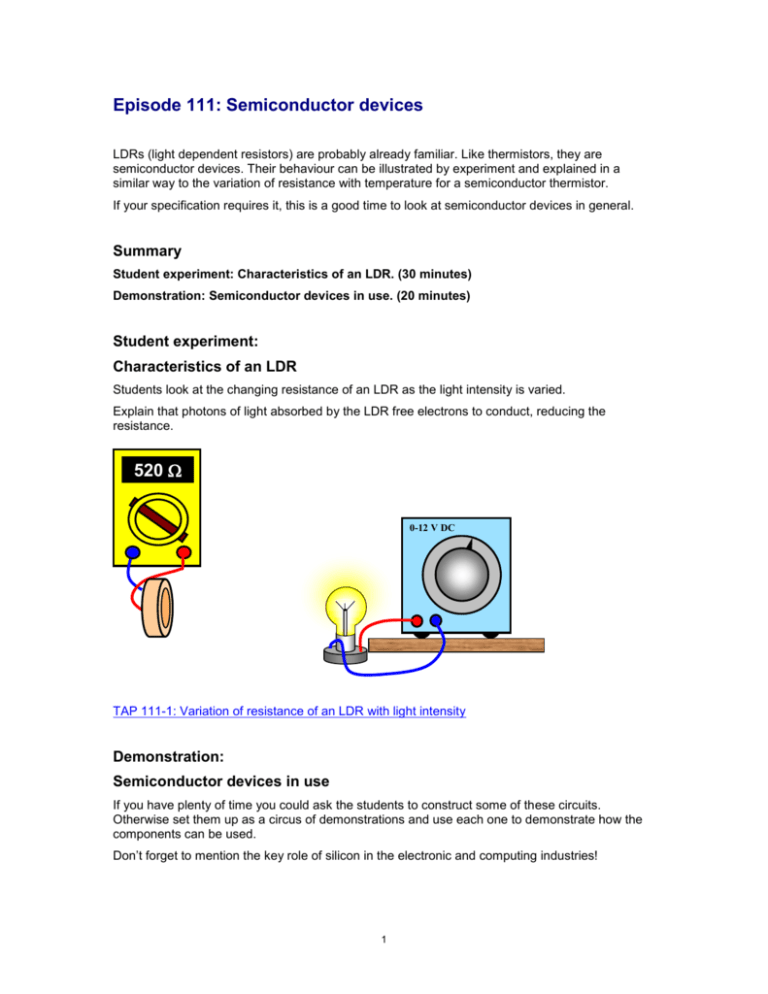
Episode 111: Semiconductor devices LDRs (light dependent resistors) are probably already familiar. Like thermistors, they are semiconductor devices. Their behaviour can be illustrated by experiment and explained in a similar way to the variation of resistance with temperature for a semiconductor thermistor. If your specification requires it, this is a good time to look at semiconductor devices in general. Summary Student experiment: Characteristics of an LDR. (30 minutes) Demonstration: Semiconductor devices in use. (20 minutes) Student experiment: Characteristics of an LDR Students look at the changing resistance of an LDR as the light intensity is varied. Explain that photons of light absorbed by the LDR free electrons to conduct, reducing the resistance. 520 0-12 V DC TAP 111-1: Variation of resistance of an LDR with light intensity Demonstration: Semiconductor devices in use If you have plenty of time you could ask the students to construct some of these circuits. Otherwise set them up as a circus of demonstrations and use each one to demonstrate how the components can be used. Don’t forget to mention the key role of silicon in the electronic and computing industries! 1 TAP 111-2: Applications of semiconductor devices 2 TAP 111-1: Variation of resistance of an LDR with light intensity Apparatus: LDR, e.g. NORP-12 Multi-meter (to use as an ohm- meter) Lux meter 12 V filament lamp in holder (e.g. SBC batten holder) Power supply. Black card Scissors Sellotape Procedure: Set up a 12 V lamp on the bench to act as a light source. Connect the multimeter to the LDR and adjust it to a suitable resistance range. Now place the LDR at different distances from the lamp and measure its resistance. At each distance replace the LDR by the lux meter and record the light intensity. You should end up with a table showing distance, light intensity and resistance. Plot a graph to show how the resistance (y-axis) varies with light intensity (x-axis). 3 TAP 111- 2: Applications of semiconductor devices Circus of demonstrations: LDR, thermistor, semiconductor diode. This is an opportunity to discuss applications. You could also introduce some ideas that will be useful later – alternating current, rectification, potential dividers, use of oscilloscopes, control circuits etc... There are many possibilities, some of which are listed below: Half-wave rectification using a single diode Full-wave rectification using a bridge rectifier (4 diodes) A thermistor as a temperature sensing circuit (e.g. to switch on a fan/motor) when hot An LDR as a light sensor to sound an alarm when a light beam is broken (e.g. a burglar alarm) Procedure: You could treat this as a construction exercise, getting different groups to make different circuits and then explain them to the rest of the class. Be aware of the power rating of the diodes and thermistors in each case, and ensure that they are not damaged by excessive currents, by suggesting suitable series resistors. The diode 1N4001 (NB: max current 1 A) with a protective resistor ~ 50 or greater, is suitable. For a negative temperature coefficient thermistor care should be exercised to avoid thermal runaway, where its drop of resistance with temperature can lead to as a damaging growth of power dissipation with time. This is prevented by inclusion of a suitable series resistor, as before. Some students may be familiar with uses of semiconductor devices from their experience in Technology; in which case, ask them to provide some demonstrations. 4
